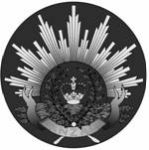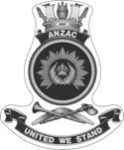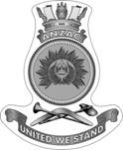- Author
- A.N. Other and NHSA Webmaster
- Subjects
- Ship design and development
- Tags
-
- RAN Ships
- HMAS Anzac III, HMAS Anzac II, HMAS Anzac I
- Publication
- March 2011 edition of the Naval Historical Review (all rights reserved)
The following tributes to the three ships which have borne the proud name Anzac have been brought together from information held in our archives. It is perhaps the expected problem of the historian that over time more information is held upon the more distant past, and in this instance we find many aged records concerning Anzac (I) and considerable material on Anzac (II), whereas that on Anzac (III) is still being assembled.
The main characteristics of these three ships demonstrate the many changes in surface ships and their capabilities covering much of the history of the RAN. Anzac (I) was an advanced ship of her time with oil burning boilers driving steam turbines, whereas many ships of this vintage were coal burning, driving reciprocating engines. Anzac (II) had the benefits of lessons learned in WW II, and although her design was somewhat obsolete she was a capable and graceful ship. Anzac (III) was the lead ship of a most successful construction program proving Australia’s capability as a successful builder of contemporary warships to demanding schedules.
While ships become marginally larger with improved weapon systems, some things such as speed have not changed. The importance of escalating costs should not be overlooked; allowing for inflation, the real cost declined during the first two building programs from 1917 to 1948, but more than doubled to 1996. Perhaps the overall surprise is how little the size of ships of European origin as weapons platforms has changed during the intervening eighty years when compared with other types of maritime vessels, which have shown quantum increases in tonnage.
The very name Anzac evokes fine traditions of dedication, endurance, mateship and selflessness shared by Australian and New Zealand forces during a period of bitter and dogged fighting and resistance on the Gallipoli Peninsula in 1915 against a worthy adversary. All three have been fine ships which have lived up to the proud motto ‘United We Stand’.
Note: Keen observers will have noted changes to the ship’s badges, starting with Anzac (I), a design inherited from the Royal Navy; there are also subtle differences to the surrounds of the Anzac (II) badge which was changed in 1964. The 1964 version is similar to that now displayed by Anzac (III).
|
Anzac (I) |
Anzac (II) |
Anzac (III) |
|
| Builder | Denny Bros | Williamstown Naval Dockyard | Tenix Defence Systems |
| Where Built | Dumbarton, Scotland | Williamstown, Victoria | Williamstown, Victoria |
| Laid Down | 31 January 1916 | 23 September 1946 | 05 November 1993 |
| Launched | 11 January 1917 | 20 August 1948 | 16 September 1994 |
| Commissioned | 24 April 1917 | 14 March 1951 | 18 May 1996 |
| Length | 99 m (325 ft) | 116 m (379 ft) | 118 m (387 ft) |
| Beam | 9.4 m (31 ft) | 12.5 m (41 ft) | 14.8 m (49 ft) |
| Draught | 3.7 m (12 ft) | 4.8 m (16 ft) | 4.4 m (14 ft) |
| Displacement full load | 1,670 tons | 2,436 tons | 3,600 tonnes |
| Armament | 4 x 4” guns 2 x 2 pdr pom poms 4 x Lewis guns | 4 x 4.5” guns 12 x 40 mm BoforsSquid A/S mortar | 1 x 127 mm (5“) gun, 2 x Quad Harpoon Sea Sparrow, 1 x Phalanx ciws, 4 x 50 cal machine guns, 1 x Seahawk helicopter |
| Torpedos | 4 x 21” tubes | 2 x 5 x 21” tubes | 6 x 324 mm (12.75”) tubes |
| Machinery | Brown Curtis steam turbinesTriple screws | 2 x Parsons geared steam turbinesTwin screw | CODOG with 1 x GE LM 2500 gas turbine + 2 x MTU dieselsTwin screw |
| Designed shp | 36,000 | 50,000 | 33,600 |
| Designed Speed | 34 kts | 35 kts | 27 kts |
| Range | 2,500 n. miles | 4,400 n. miles | 6,000 n. miles |
| Complement | 122 | 290 | 173 |
| Cost | £209,337 ($418,674) | £250,000 ($500,000) | $600 m (approx) |







